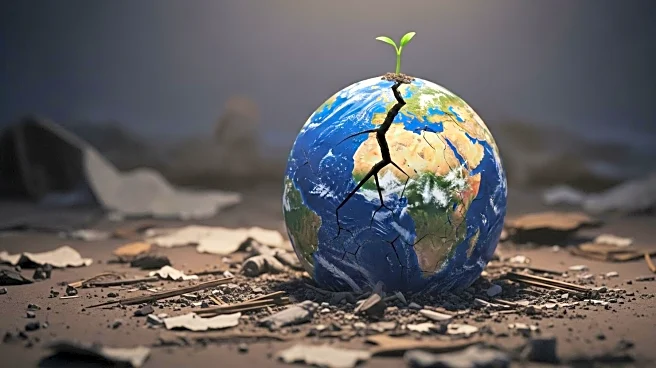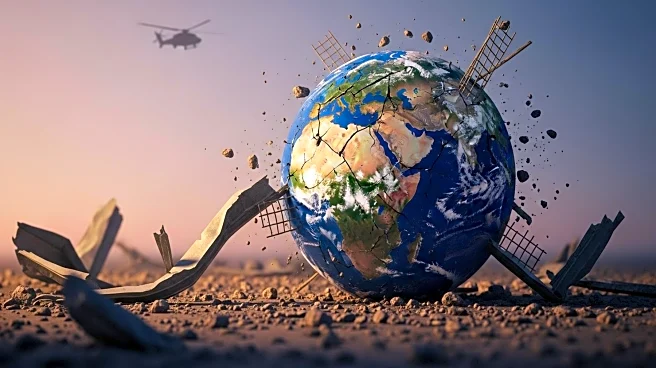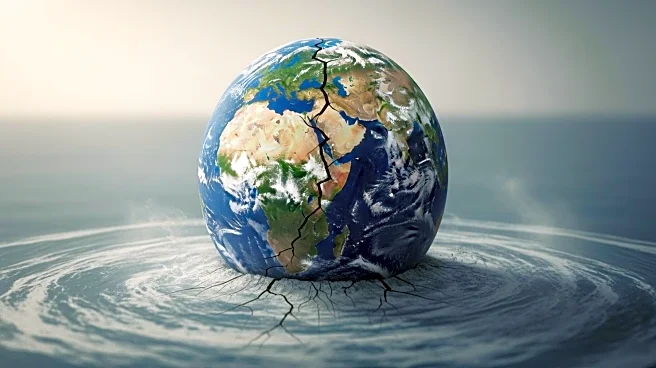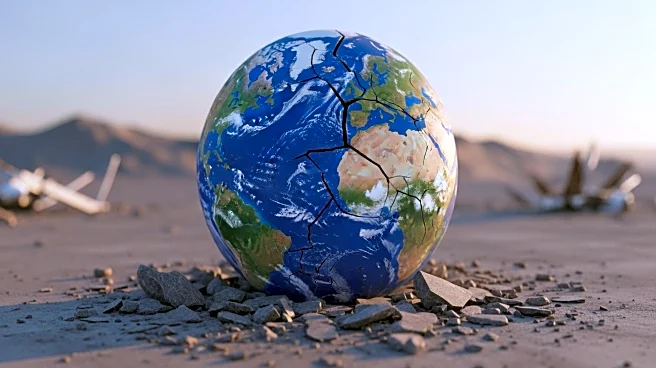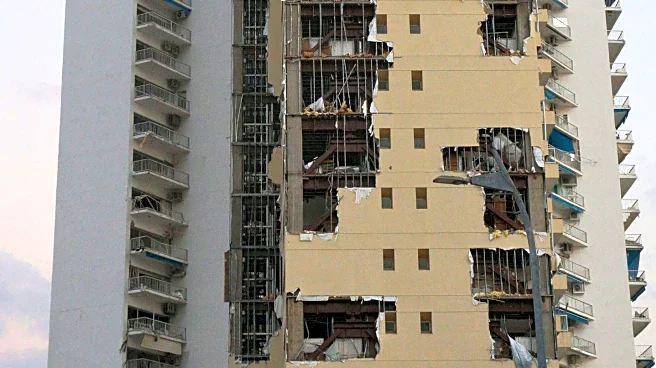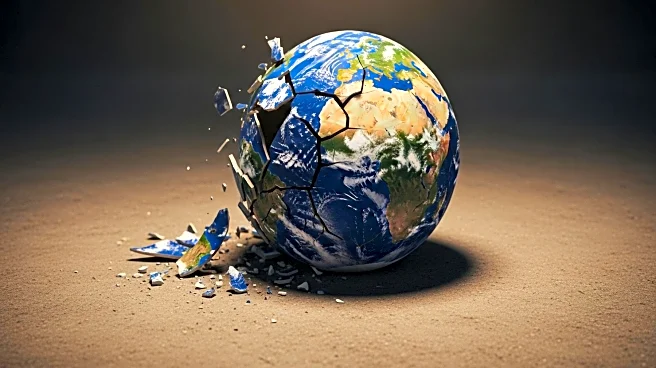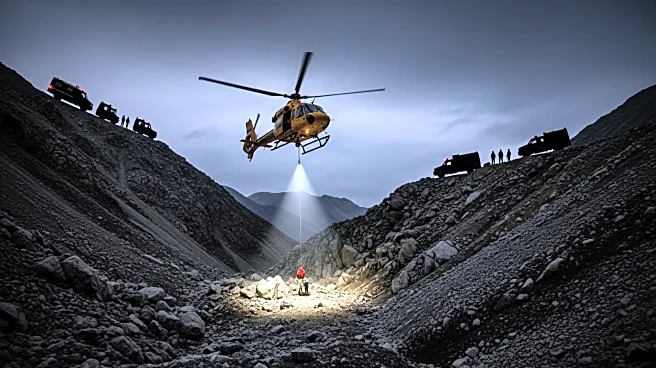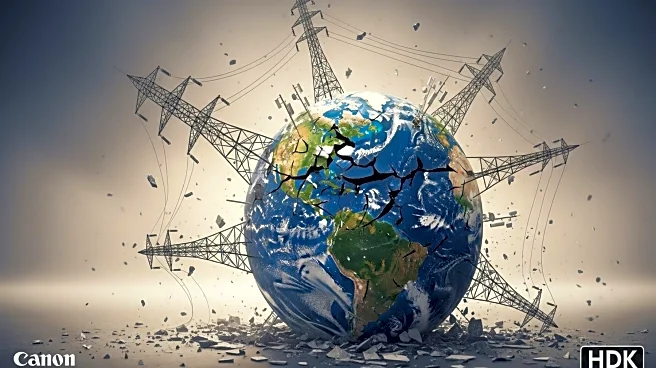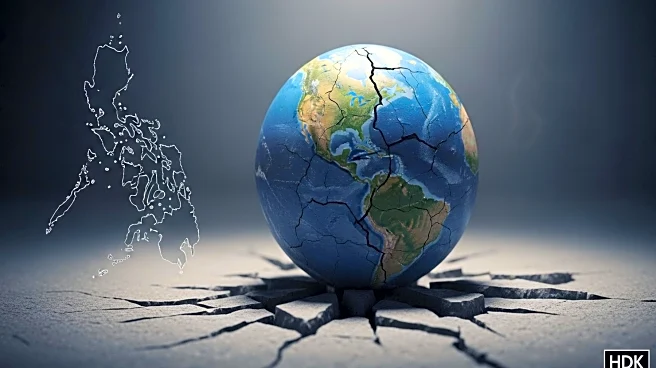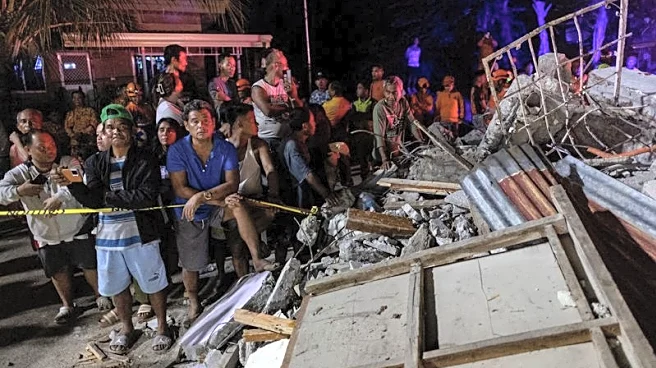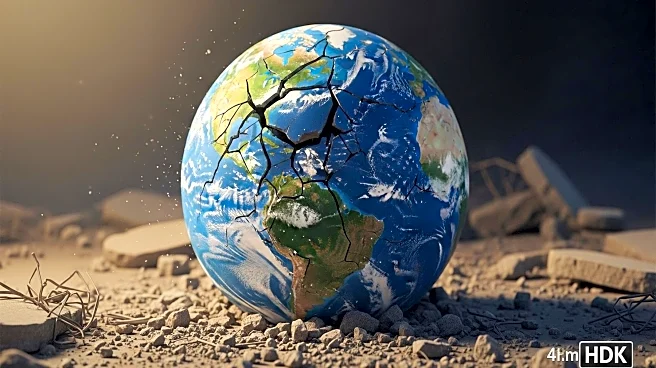What is the story about?
What's Happening?
A magnitude 6.9 earthquake recently struck the central Philippines, particularly affecting the northern coast of Cebu, one of the country's most populous islands. The earthquake has resulted in at least 68 fatalities and over 500 injuries, with significant damage to homes, buildings, and infrastructure. The disaster has displaced nearly 80,000 people, forcing many to seek temporary shelter in tents. Survivors, like Arguel Estalicas, report feeling dizzy and overwhelmed by the aftershocks and the devastation around them. The earthquake has turned vibrant communities into ghost towns, with residents like Lourenze Pareja documenting the chaos and destruction. The Philippines, located on the Pacific Ring of Fire, is prone to such natural disasters, and this earthquake is one of the strongest and deadliest in recent years.
Why It's Important?
The earthquake's impact on Cebu, a major trading and transportation hub, highlights the vulnerability of the Philippines to natural disasters. The immediate need for food, water, and medical supplies underscores the challenges faced by disaster response teams in providing relief to affected areas. The situation has prompted the deployment of military troops to maintain order and assist in relief efforts. The disaster not only affects the local population but also has broader implications for the region's economy and infrastructure. The destruction of homes and businesses could lead to long-term economic challenges, while the psychological impact on survivors may require extensive support and resources.
What's Next?
Efforts are underway to deliver essential supplies, restore power and communication lines, and clear debris from roads. The Philippine government and international aid organizations are likely to increase their support to address the immediate needs of the affected population. Long-term recovery plans will be necessary to rebuild infrastructure and provide psychological support to survivors. The disaster may also prompt a reevaluation of disaster preparedness and response strategies in the region, considering the Philippines' susceptibility to such events.
Beyond the Headlines
The earthquake raises questions about the adequacy of current building codes and infrastructure resilience in the Philippines. As the country frequently experiences natural disasters, there may be a push for stricter regulations and improved construction practices to mitigate future risks. Additionally, the psychological toll on survivors highlights the need for mental health support as part of disaster response efforts. The event also serves as a reminder of the broader impacts of climate change and environmental instability, which can exacerbate the frequency and severity of natural disasters.
AI Generated Content
Do you find this article useful?
